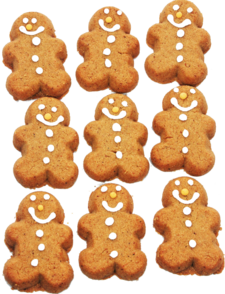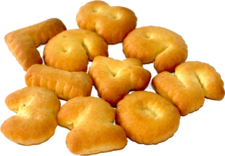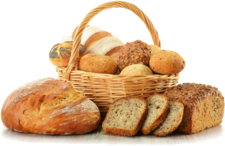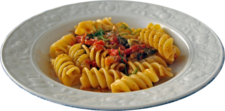Dough: Difference between revisions
From DT Online
(Created Article) |
mNo edit summary |
||
| Line 115: | Line 115: | ||
Some basic recipes are described below but searching the internet will reveal many, many more. | Some basic recipes are described below but searching the internet will reveal many, many more. | ||
======[https://en.wikipedia.org/wiki/Salt_dough Salt Dough]====== | ======[https://en.wikipedia.org/wiki/Salt_dough Salt Dough]====== | ||
(use for modelling : not suitable for eating) | ''(use for modelling : not suitable for eating)'' | ||
{| | {| | ||
|- | |- | ||
Latest revision as of 16:47, 30 December 2017
Description
Dough is made simply by mixing flour with a liquid such as water or milk. Other ingredients are added to change or control characteristics such as Elasticity of the dough mixture or texture, colour and taste of the finished product. During mixing, individual Gluten proteins in the flour unravel and bond together to create a network of interconnected gluten strings which hold the dough together and give it its structure. Most recipes will use Plain or All-Purpose Flour, but some flours contain more gluten than others.
Ingredients
- Adding a little salt will neutralise electrically charged parts of the gluten allowing them to slide along one another to make a more elastic and stretchable dough. Salt Dough includes lots of salt which produces almost a modelling clay type material which is good for making painted tree ornaments but not really good to eat.
- Adding oil or butter can suppress the formation of gluten by coating the protein with fat - especially if oil or softened butter is added directly to the flour before the dough is formed. Such recipes are used for traditional flatbreads and pizza bases for example.
- Eggs add richness and colour to the mix. They add water which helps glutens develop but yolks contain a high percentage of fat, which like oil weakens gluten development. They also add their own proteins which are softer and less chewy than gluten proteins.
- Baking Soda, Baking Powder, and Yeast are added to create gas bubbles (i.e. Leavening Agents) which are trapped within the elastic dough and which set when cooked to give the product its texture.
- A small amount of sugar or other sweetening ingredient may help activate and feed any yeast present in the recipe. Adding more sugar or syrup will make the product sweeter, of course, but may also add colour and flavour depending on the type used.
- Additionally, various flavourings and spices can be added as required.
Recipe Quantities
UK recipes for home baking tend to provide amounts for the larger quantities (e.g. flour) in grams but use Cups, Tablespoon, Teaspoon, Drop, and Pinch as Weights and Measures.
These units are not well defined and there is significant variation between UK and US versions shown in recipes. This leaves scope for experimentation when using any published recipe, but the amounts can generally be approximated as follows:
| Unit | Metric UK | American | ||||||
|---|---|---|---|---|---|---|---|---|
| Dry (grams) | Liquid (millilitre) | Dry (grams) | Liquid (millilitre) | |||||
| Flour | Sugar | Salt | Liquid (milk) | Flour | Sugar | Salt | Liquid (milk) | |
| * Cups | 150 | 212 | 300 | 250 | 125 | 200 | 285 | 240 |
| * Tablespoon | 8 | 13 | 18 | 15.5 | 8 | 12.5 | 18 | 15 |
| * Teaspoon | 3 | 4 | 6 | 5 | 3 | 4 | 6 | 5 |
| * Drop | 0.03 | 0.04 | 0.06 | 0.05 | 0.03 | 0.04 | 0.06 | 0.05 |
| * Pinch | 0.12 | 0.16 | 0.3 | 0.25 | 0.12 | 0.16 | 0.3 | 0.25 |
Note: The different dry weights are because of the different Densities of dry ingredients and how closely they are packed together. The Density of water is 1 (and milk almost the same) so if you think the ingredient would float then assume it to be less than one, and therefore proportionally less than the figure given for the liquid measure, and more if it would sink. For guidance the Densities of some common ingredients are: Flour (0.7); Salt (1.2); Butter (1.2); Sugar (0.9) - (e.g. a 250ml cup of milk x 1.2 = 300g of fine salt).
Bakers' Percentages
Using measures such Cups, Tablespoon, or Teaspoon may be quite adequate for the relatively small quantities used in domestic cooking but would be difficult to scale up for baking commercially. Professional bakers therefore tend to work with the proportion of each ingredient required in relation to the amount of flour and use what are known as the Baker percentages.
Any recipe can be converted to Baker percentages by dividing the weight of each ingredient by the weight of flour and multiplying by 100% as shown:
A common biscuit recipe therefore might be: 100% Plain Flour; 80% Softened Butter; 7% Egg Yolk; 50% Caster Sugar; 3% Vanilla Extract (a UK Standard Egg weighs about 60g without shell of which 20g is the Yolk)
Dough Recipes
Some basic recipes are described below but searching the internet will reveal many, many more.
Salt Dough
(use for modelling : not suitable for eating)
|
|
Gingerbread Man
|
|
Biscuit Dough
|
|
Pastry Dough
|
|
Cake Mix
|
|
Bread Dough
|
|
Pizza Dough
|
|
Pasta Dough
|
|








